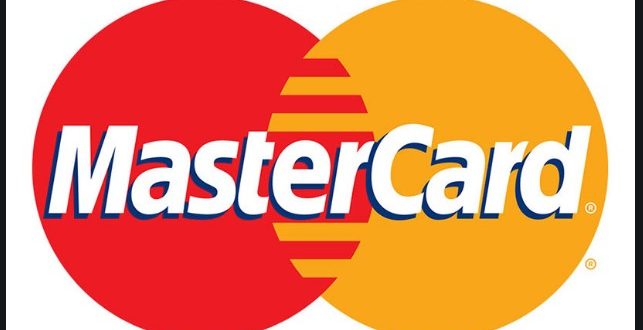Seeking Touch-Free Payment Experiences
During March, as many countries in the Middle East and Africa (MEA) imposed necessary
restrictions on social distancing, a significant majority of consumers turned to contactless
card payments for necessary purchases. 70 percent of respondents in the MEA region say
they are now using contactless payments, citing safety and cleanliness as key drivers.
Consumer polling by Mastercard, studying changing consumer behaviors in 19 countries
around the world, paints a picture of accelerated and sustained contactless adoption.
The act of running to the store for eggs, medicine and other necessities has changed
dramatically. Shoppers around the world have had to adjust to social distancing measures
and other new challenges when buying everyday supplies for their families and loved ones.
This shift in consumer behavior is particularly clear at checkout, as people express a desire
for contactless, and voice concerns over cleanliness and safety at the point of sale,
according to the new Mastercard study. In fact, findings from respondents in the Middle
East & Africa show:
· Contactless Move to Top of Wallet – Perceptions of safety and convenience have spurred a
preference for contactless cards and reminded consumers of the convenience of tapping on
a global scale. Six in 10 (61 percent) respondents in the region have swapped out their top-
of-wallet card for one that offers contactless.
· Confidence in Contactless – The global disruption has led to increased concern from
consumers on cash usage and positive perceptions towards contactless due to the peace of mind that it provides. 70 percent of respondents in the region say they are now using some form of contactless payment. Amidst the pandemic, 84 percent agreed that contactless is a
cleaner way to pay. Furthermore, 79 percent said contactless payment methods have been easy to adopt. Contactless payments are up to 10 times faster than other in-person payment methods, enabling customers to get in and out of stores faster.
· Contactless is Here to Stay – We are in a sustained period in which consumers are making
purchases in a very focused way; it’s reinforcing contactless use in markets where adoption is more mature, and it’s stimulating use in newer markets. This trend appears to be here to
stay. Nearly two in three respondents (64 percent) confirmed that the pandemic has led them to use less cash, and 81 percent said they will continue to use contactless post-
pandemic.
“In addition to prioritizing physical safety, it is crucial to ensure that Egyptians can complete their everyday transactions amidst social distancing recommendations. The Central Bank of Egypt (CBE) has made important and supportive decisions in the wake of this pandemic – in addition to doubling the CVM limit to EGP 600, it has also allowed mobile network operators and banks to offer a digital self-registration service for mobile wallets, so consumers won’t have to leave their homes. Mastercard supports these initiatives, which are part of our efforts to facilitate digital and contactless transactions in Egypt, thereby providing safe, secure and efficient payment solutions, while encouraging social distancing,” said Magdy Hassan, Mastercard’s General Manager for Egypt and Pakistan.
In addition to encouraging contactless payments, Mastercard has worked closely with the CBE, partners, and governmental entities, to leverage its expertise and technology to
facilitate the self-registration of mobile wallets in Egypt. Egypt currently has over 14
million mobile wallets that allow consumers to pay bills online, shop and transfer money
from the safety of their homes. While previously, Egyptian consumers were required to visit
a branch to register for the mobile wallet service, the CBE’s decision to allow mobile
network operators and banks to offer digital self-registration services for mobile wallets,
accelerates the digitization of financial transactions, provides safe, secure and efficient
payment solutions for everyone, while encouraging social distancing.
Egyptian consumers can now self-register for wallets through trusted digital channels of mobile network operators with more issuers expected to allow for this feature in the coming weeks.
Contactless Tipping Point
Mastercard has been spearheading the worldwide shift to contactless for years, championing the simple, safe and fast way to pay. As consumers increasingly seek out ways to quickly get in and out of stores without touching terminals, Mastercard data reveals over 40 percent growth in contactless transactions globally in the first quarter of 2020[1]. Further, 80 percent of contactless transactions are under $25, a range that is typically dominated by cash.
While countries worldwide are at different stages of contactless deployment and usage for daily shopping habits, Mastercard’s insights on grocery and pharmacy trends – two areas where many day-to-day essentials are being purchased – showed that nearly all regions experienced significant spikes in February and March. Further, reinforcing changing behaviors and consumer checkout preferences, Mastercard saw the number of contactless transactions grow four times as fast as non-contactless transactions in Middle East and Africa at grocery stores and pharmacies [2].
In the past few weeks, Mastercard announced commitments to increase contactless payment limits in more than 50 countries worldwide, including Egypt, where a decision by the Central Bank of Egypt (CBE) led to an increase of the cardholder verification method limit to EGP 600. Limit increases were part of Mastercard’s global effort to make sure consumers, merchants and small businesses have the resources to safely pay, receive payment, and maintain operations during the COVID-19 crisis.
 التكنولوجيا وأخبارها بوابة مصر لأخبار تكنولوجيا المعلومات والإتصالات وفي أفريقيا كما تعتبر مصدر رئيسي للمعلومات حول تكنولوجيا المعلومات والاتصالات والفرص الاستثمارية المرتبطة بالاقتصاد الرقمي في المنطقة بالكامل
التكنولوجيا وأخبارها بوابة مصر لأخبار تكنولوجيا المعلومات والإتصالات وفي أفريقيا كما تعتبر مصدر رئيسي للمعلومات حول تكنولوجيا المعلومات والاتصالات والفرص الاستثمارية المرتبطة بالاقتصاد الرقمي في المنطقة بالكامل







